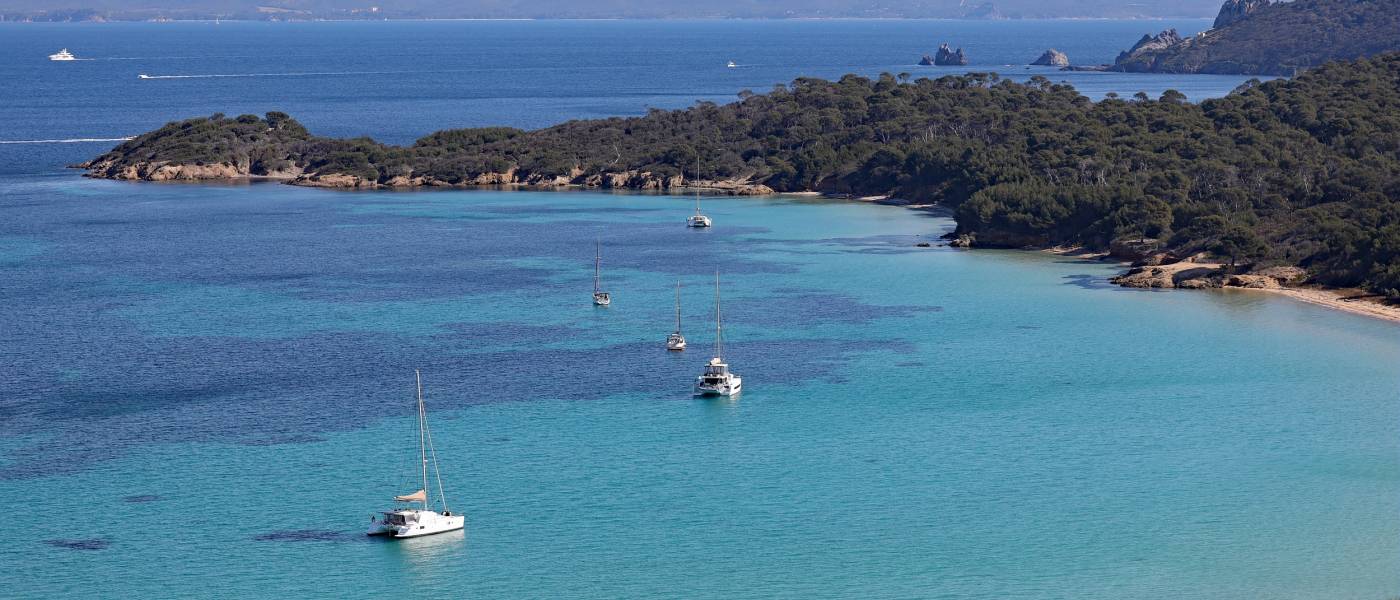In the Mediterranean, marine protected areas (MPAs) serve the general interest by providing positive impacts on biodiversity, ecosystems, and local communities. This is the finding of a report from the Plan Bleu on the costs and benefits associated with protection measures implemented in the Cerbère-Banyuls and Port-Cros MPAs.
For around forty years, the Plan Bleu, a French legal structure with its work priorities defined every two years in collaboration with the United Nations Environment Programme (UNEP), has produced reports and scenarios to raise awareness among Mediterranean decision-makers about environmental and sustainable development issues, with a significant economic component.
One of its recent reports focused specifically on the socio-economic impacts generated by the Cerbère Banyuls marine reserve in the Pyrénées-Orientales and the Port-Cros National Park in the Var. A common feature of these areas is that they are both marine protected areas, although to varying degrees: « Among the 650 hectares that make up the Cerbère-Banyuls Reserve, 585 hectares are in a partial protection zone (PPZ) where activities are regulated, and 65 hectares are in a reinforced protection zone (RPZ) where all activities are prohibited, » details the report. Likewise, the Port-Cros National Park consists of a core zone (with strong protection around the Hyères islands) and an adjacent maritime area.
Difficult-to-evaluate benefits
Why evaluate these impacts? « Because it is necessary to measure the benefits; otherwise, we only consider the costs, » explains Guillaume Sainteny to Mer et Marine. The president of Plan Bleu acknowledges that the acceptability of MPAs is a constant challenge, even decades after their creation. This is the case for Port-Cros National Park, the oldest marine park in Europe celebrating its 60th anniversary last year, and the Cerbère-Banyuls marine reserve, the first exclusively marine reserve in France, established just 50 years ago.
The costs, precisely. According to the report, €420,000 per year is allocated to protection measures in the Cerbère-Banyuls marine reserve, and between €600,000 and €660,000 per year in Port-Cros National Park. However, « while it is straightforward to quantify the cost of an MPA, it is somewhat more complex to evaluate the collective benefits, » continues Guillaume Sainteny, a specialist in environmental policies, eco-taxation, biodiversity, and climate change.
General Interest
Several methods were applied to assess these impacts: market prices where available, for example, to evaluate the impact of protection measures (quotas, bans, etc.) on the incomes of professional fishermen; value transfer (which uses cost and benefit values assessed in other studies and adapts these values to the specific case of the evaluation), and qualitative methods, including focus groups with MPA managers and interviews with representatives of economic sectors.
Concerning collective interest benefits, MPAs have positive impacts, concludes the report. « Following the implementation of protection measures, a significant improvement in biodiversity and ecosystems (such as seagrass beds and fish populations) is observed, as well as an increase in carbon sequestration due to the expansion and health of seagrass beds, » scientifically assessed as true carbon sinks and fish nurseries, similar to mangroves or salt marshes. For example, in Cerbère-Banyuls, 700 groupers were counted in the marine reserve in 2023, compared to 10 at its creation in 1974. « This increase is attributed to management efforts, collaboration with fishermen, and strict rules applied within the Reserve. »
Translated into euros, the non-market benefits associated with biodiversity protection and improvement amount to €21.6 million per year in the Cerbère-Banyuls marine reserve and €48.7 million per year in the Port-Cros National Park. Non-market benefits for society and local communities, directly linked to increased carbon sequestration, range from €1.3 to €1.4 million per year in Cerbère-Banyuls and €22.5 million per year in Port-Cros. From this perspective, marine protected areas, whose main objective is to enhance biodiversity and ecosystem health while contributing to collective well-being, appear to fulfill their mission.
Millions of euros, market and non-market
The results are more nuanced concerning specific interest sectors, such as professional fishing, recreational fishing, or tourism. Firstly, because much data is unavailable and therefore not considered. Nonetheless, concerning professional fishing, the report reveals that in both case studies, « a clear improvement in catches (in terms of kilos per unit of effort) is observed. »
In Cerbère-Banyuls, these catches generate €35,000 per year in revenue attributable to the marine protected area, while in Port-Cros, the directly related catch value due to reserve effects ranges from €21,000 to €76,000. In the Pyrénées-Orientales, « professional fishermen seeking better catches turn to areas around the reserve, » as these areas offer better catches and higher revenues. The number of professional fishermen has also decreased both at Port-Cros and Cerbère-Banyuls. « However, this variation cannot be entirely attributed to protection measures, as it is also influenced by economic conditions and notably the gradual closure of large fishing units, » specifies the report.
Tourism and future studies
Regarding tourism, the « increased pleasure of diving » resulted in an additional €6.2 million in economic benefits in Cerbère-Banyuls, solely due to environmental improvements resulting from protection measures (no available data for Port-Cros, where the number of divers has decreased over the years). Finally, in Var, the authors estimate that visitors spend €154 million annually directly related to the marine area’s presence. Non-market benefits related to « well-being from nature interaction » can be estimated at €513 million per year.
Guillaume Sainteny readily admits that this report is subject to improvement due to missing or insufficiently harmonized data. « But we must bear in mind that we are starting from a much lower point concerning the impact measurements of marine environment protection compared to the terrestrial environment. The law is newer, and monitoring is more complex. In any case, the study shows that the creation of these two protected areas has generally generated economic value. »
However, this study calls for further research to deepen the understanding of the impact of different MPAs. « It is recommended to explore mechanisms for better quantifying the overall economic benefits of MPAs, by evaluating direct and indirect impacts, such as induced jobs and long-term improvements in economic productivity, » concludes the report, which also recommends a comparative approach between different MPAs to assess and identify the most effective management practices for preservation while supporting sustainable economic activities.



